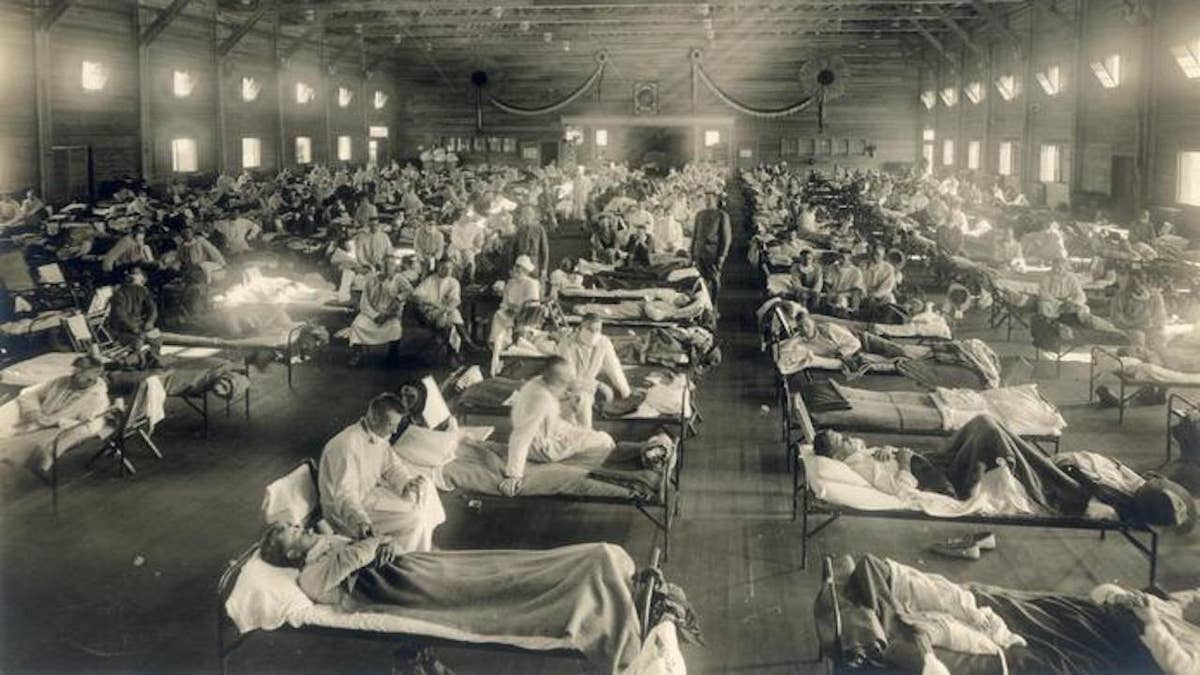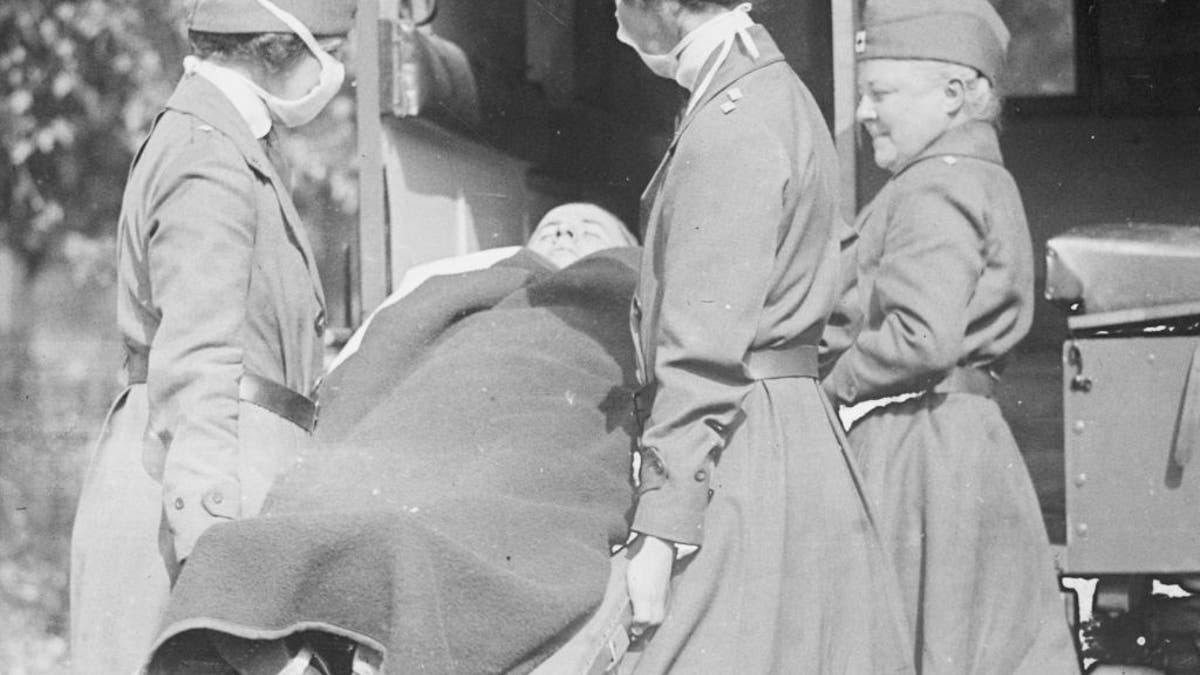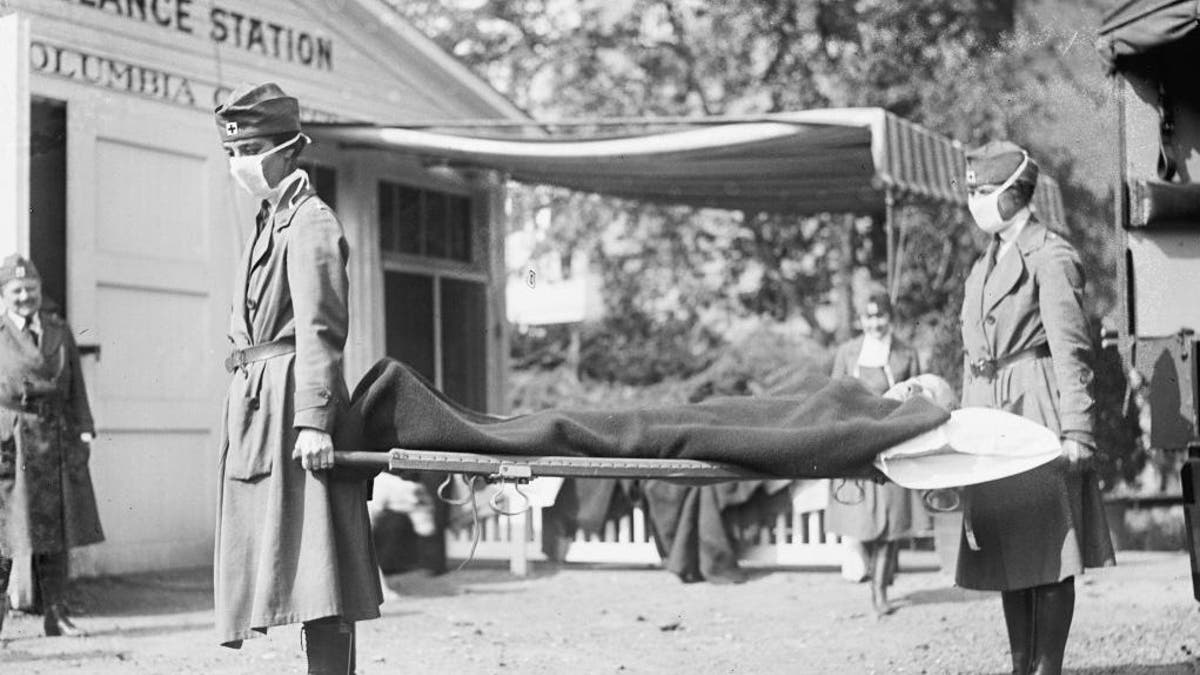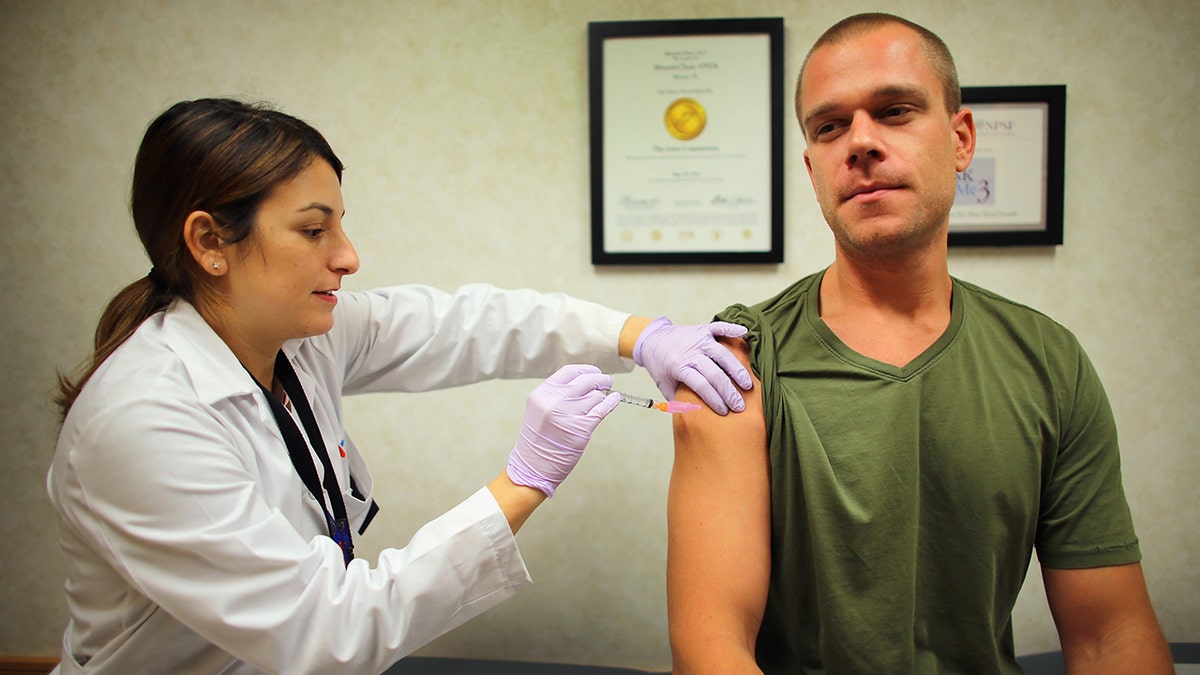[ad_1]
The skeletons of people that have been alive in the course of the 1918 flu pandemic have revealed new clues about individuals who have been extra prone to die from the virus.
Often called the deadliest in historical past, the 1918 flu pandemic — additionally known as the Spanish flu — killed an estimated 50 million individuals.
It’s lengthy been assumed that the 1918 flu primarily affected younger, wholesome adults — however a brand new examine printed within the journal Proceedings of the Nationwide Academy of Sciences appears to contradict that, suggesting that frail or unhealthy individuals have been extra weak.
DOCTORS URGE VACCINATIONS AHEAD OF THIS YEAR’S FLU SEASON, WHICH COULD BE ‘FAIRLY BAD,’ EXPERTS SAY
Researchers from McMaster College in Canada and the College of Colorado Boulder examined the skeletal stays of 369 people housed on the Cleveland Museum of Pure Historical past.
All of those people died both quickly earlier than or in the course of the 1918 pandemic, in keeping with a press launch from McMaster. The pattern was divided into two teams: a management group who had died earlier than the pandemic; and one other group who died in the course of the pandemic, in keeping with the discharge.

An emergency hospital at Camp Funston, Kansas, is proven in the course of the 1918 influenza pandemic. New analysis contradicts the widespread perception that the flu disproportionately impacted wholesome younger adults. (Nationwide Museum of Well being and Medication, Otis Historic Archives New Contributed Picture Assortment/Wikimedia Commons)
They examined the bones for lesions that will have indicated stress or irritation, which may have been brought on by bodily trauma, an infection or malnutrition, the discharge said.
“By evaluating who had lesions, and whether or not these lesions have been energetic or therapeutic on the time of dying, we get an image of what we name frailty, or who’s extra prone to die,” stated Sharon DeWitte, a organic anthropologist on the College of Colorado Boulder and co-author on the examine.
“Our examine exhibits that folks with these energetic lesions are probably the most frail.”
FLU PREVENTION TIPS FROM FLORIDA’S SURGEON GENERAL: A ‘DAY-TO-DAY’ HEALTHY LIFESTYLE IS KEY
Lead examine creator Amanda Wissler, an assistant professor within the Division of Anthropology at McMaster, stated the examine highlights how cultural, social and organic circumstances have an effect on the chance of dying.
“Even in a novel pandemic — one to which nobody is meant to have prior immunity — sure individuals are at a larger threat of getting sick and dying, and that is usually formed by tradition,” she stated in an interview with Fox Information Digital.

An illustration is proven on the Purple Cross Emergency Ambulance Station in Washington, D.C., in the course of the influenza pandemic of 1918. (Getty Photos)
The researcher famous that this similar phenomenon was seen in the course of the early days of the COVID-19 pandemic within the U.S.
“The information was stuffed with stories about how individuals who had been minoritized, or [had] decreased entry to social providers, usually had larger charges of getting very sick or dying,” she stated.
“‘Wholesome’ individuals are not imagined to die. Now we have a time period referred to as ‘selective mortality,’ which says that sure individuals are extra prone to die than others.”
The findings of the examine weren’t stunning to the researchers, Wissler stated.
“‘Wholesome’ individuals are not imagined to die,” she stated. “Now we have a time period referred to as ‘selective mortality,’ which says that sure individuals are extra prone to die than others.”
COVID-19 PATIENTS FACE INCREASED HEALTH RISKS FOR UP TO 2 YEARS, STUDY FINDS
“Many research have discovered that sure individuals are extra prone to die in all types of contexts, together with different pandemics just like the Black Demise, and in addition in pure disasters,” the researcher continued.
“I might even have been considerably stunned if individuals who have been wholesome had a larger threat of dying in 1918.”
Examine had some limitations
One key limitation of the examine, in keeping with Wissler, is that the researchers solely had data on individuals who died from the pandemic — however none on individuals who bought contaminated however survived.
“We don’t know if being unhealthy or burdened might have precipitated an individual to be extra prone to [have been] contaminated with the 1918 flu,” she stated.

An illustration is proven on the Purple Cross Emergency Ambulance Station in Washington, D.C., in the course of the influenza pandemic of 1918. (Getty Photos)
Moreover, the people who have been studied all got here from Cleveland, Ohio, Wissler famous.
“This examine solely offers a snapshot of a sure time and place of the expertise of the 1918 flu,” she stated.
“We don’t know but if what we discovered right here will be generalized to each metropolis.”
COVID-19, FLU AND RSV VACCINES ARE ALL AVAILABLE THIS FALL: SEE WHAT SOME DOCTORS RECOMMEND AND WHY
MarkAlain Déry, DO, an infectious illness doctor in New Orleans, famous that the examine raises some questions. He was not concerned within the analysis.
Initially, Déry stated he was “tremendous excited” concerning the new analysis, which highlighted “that individuals who expertise well being inequities have greater charges of sickness and mortality.”

To guard towards right this moment’s strains of influenza, the Facilities for Illness Management and Prevention recommends that everybody 6 months and older get an annual vaccination. (Joe Raedle/Getty Photos)
The analysis is “kind of saying what we already know, which is that folks in weak communities and in decrease socioeconomic statuses have a larger stage of frailty and mortality on account of the 1918 influenza outbreak,” Déry stated.
The important thing concern, nonetheless, is that it’s not recognized whether or not the individuals who have been examined died of influenza, he identified.
Additionally, the scale of the examine was comparatively small, he stated.
CLICK HERE TO SIGN UP FOR OUR HEALTH NEWSLETTER
General, the researchers famous that the undertaking highlights the significance of finding out the previous.
“Finding out previous pandemics and epidemics offers us with a time depth to our understanding of how these ailments have an effect on people and the way we, in flip, have an effect on ailments,” Wissler informed Fox Information Digital.
CLICK HERE TO GET THE FOX NEWS APP
“Loads of the time, we discover that the chance elements for illness that we have now right this moment have been the identical prior to now.”
To guard towards right this moment’s strains of influenza, the Facilities for Illness Management and Prevention (CDC) recommends that everybody 6 months and older get an annual vaccination.
For extra Well being articles, go to foxnews.com/well being


